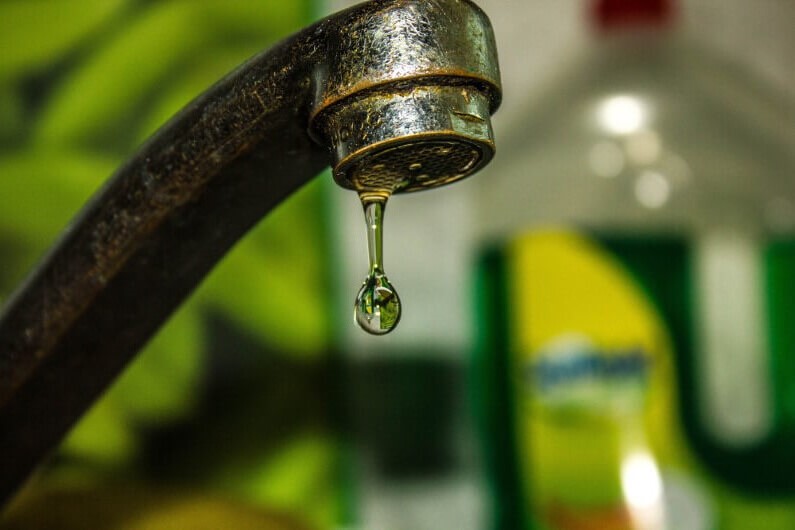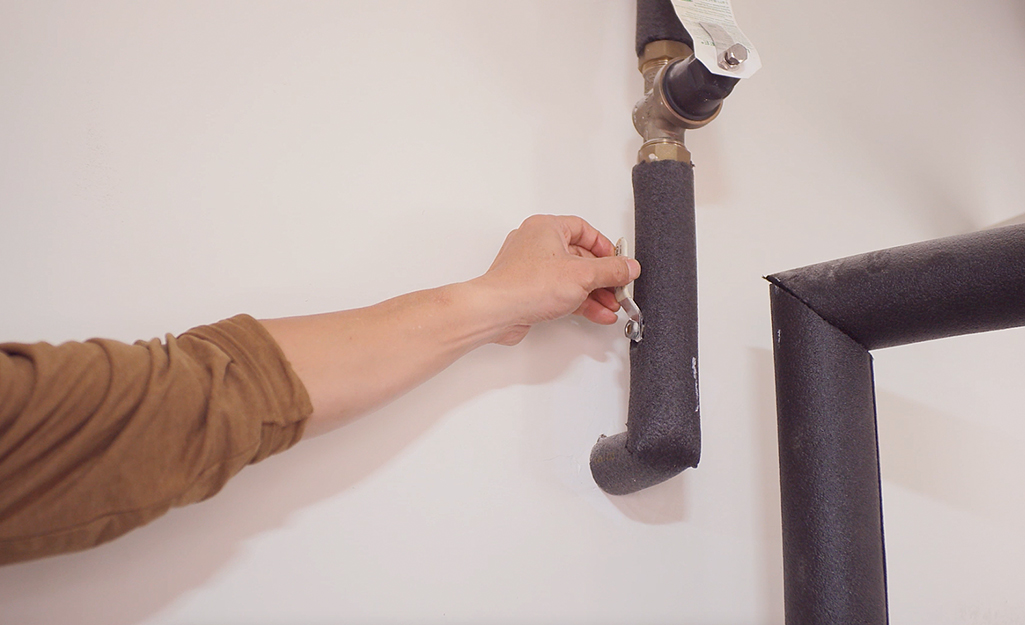Exploring the Relevance of Dealing with a Malfunctioning Faucet
Exploring the Relevance of Dealing with a Malfunctioning Faucet
Blog Article
Do you find yourself in search of know-how involving What Causes Leaky Faucets & How To Fix Them?

Dripping taps might seem like a minor inconvenience, but their effect exceeds just the annoyance of the noise. From drainage to incurring unneeded economic costs and health dangers, overlooking a leaking tap can result in numerous repercussions. In this short article, we'll look into why it's critical to address this common home problem without delay and properly.
Waste of Water
Ecological Effect
Trickling faucets contribute substantially to water wastefulness. According to the Environmental Protection Agency (EPA), a single faucet leaking at one drip per second can waste greater than 3,000 gallons of water per year. This not just stress water sources yet additionally influences ecosystems and wildlife depending on them.
Financial Expenses
Increased Water Costs
Past the environmental influence, dripping taps can inflate water expenses substantially. The accumulated wastage gradually translates into higher energy expenditures, which can have been avoided with prompt repair work.
Possible Home Damages
Furthermore, prolonged trickling can lead to damage to fixtures and surfaces bordering the faucet. Water buildup can cause discoloration, rust, and also structural concerns if left ignored, causing extra repair service costs.
Health and wellness Problems
Mold and Mildew Growth
The continuous existence of moisture from a leaking faucet produces an ideal atmosphere for mold and mildew and mold growth. These fungi not just compromise indoor air top quality but additionally present health risks, particularly for individuals with respiratory system problems or allergic reactions.
Waterborne Conditions
Stationary water in leaking faucets can come to be a breeding ground for bacteria and various other pathogens, boosting the risk of waterborne diseases. Contaminants such as Legionella microorganisms grow in stagnant water, possibly bring about serious health problems when ingested or inhaled.
DIY vs. Expert Fixing
Benefits and drawbacks of DIY Repair Service
While some may try to take care of a trickling tap themselves, DIY repairs come with their very own set of difficulties. Without appropriate knowledge and devices, do it yourself efforts can aggravate the problem or result in incomplete repair services, lengthening the trouble.
Benefits of Employing a Professional Plumber
Working with an expert plumber makes certain that the underlying source of the dripping faucet is resolved efficiently. Plumbings possess the expertise and devices to detect and repair tap issues successfully, saving time and reducing the risk of more damage.
Step-by-Step Overview to Taking Care Of a Dripping Faucet
Tools Called for
Before trying to repair a leaking faucet, gather the essential devices, consisting of a flexible wrench, screwdrivers, replacement components (such as washing machines or cartridges), and plumber's tape.
Usual Tap Issues and Their Solutions
Identify the sort of tap and the certain problem causing the drip. Typical troubles include damaged washers, corroded shutoff seats, or damaged O-rings. Refer to maker instructions or on the internet tutorials for detailed guidance on repairs.
Safety nets
Regular Upkeep Tips
To avoid leaking faucets, do routine maintenance such as cleaning aerators, examining for leaks, and replacing worn-out parts immediately. Furthermore, think about mounting water-saving devices or upgrading to a lot more effective components.
Relevance of Prompt Services
Addressing leaking taps as quickly as they're observed protects against more water wastefulness and possible damages, ultimately conserving both water and cash over time.
Impact on Building Worth
Understanding of Well-Maintained Residential Property
Preserving a residential property in good condition, including addressing upkeep problems like dripping taps, improves its viewed value and charm amongst prospective customers or occupants.
Impact on Resale Value
Characteristics with well-kept plumbing fixtures, consisting of taps, command greater resale values in the property market. Dealing with trickling taps can contribute to a favorable impression during residential or commercial property assessments and arrangements.
Environmental Duty
Specific Contribution to Conservation
Taking duty for repairing leaking faucets aligns with wider initiatives toward water conservation and ecological sustainability. Every person's activities jointly make a significant impact on maintaining precious resources.
Lasting Living Practices
By focusing on timely repair work and adopting water-saving behaviors, individuals add to sustainable living techniques that benefit both present and future generations.
Conclusion
Attending to a dripping tap surpasses plain benefit; it's a vital step towards preserving water, lowering financial expenses, and securing wellness and residential property. Whether with do it yourself fixings or expert help, taking action to repair dripping faucets is a small yet impactful way to promote accountable stewardship of sources and contribute to a much healthier, much more sustainable future.
How to Fix a Leaky Faucet: Step-by-Step Repair Guide
A leaky faucet may seem like a simple annoyance, but if it's not fixed promptly, that leak could cost hundreds to potentially thousands. From water damage to mold, mildew, and high water bills, even a tiny leak can be catastrophic if left unattended. Damage like this can even affect the overall value of your home, so it's important to take the right approach for leaky faucet repair. You may need the help of a plumber in some cases, but we've got a few tips you can try on how to fix a leaky faucet before calling the pros.
Four Faucet Types
When you're learning how to fix a leaky faucet, the first step is knowing what kind of faucet you're working with! There are four common types.
Cartridge Faucets
Cartridge faucets come in one- or two-handled varieties. In one-handled cartridge faucets, hot and cold water combines in a single cartridge. In the two-handled versions, hot and cold water are controlled separately and mixed in the faucet.
Ball Faucets
Ball faucets have a single lever you push up and down to adjust the pressure and rotate to change the temperature. A slotted metal ball controls the amount of water allowed into the spout.
Compression Washer Faucets
They're the oldest type of faucet, but they're still used in many homes — especially older ones. Compression faucets have two separate handles that, when turned, raise or lower the washer that seals a water valve. This valve stops water from flowing through the faucet when it is turned off.
Disc Faucets
Disc faucets rarely need to be repaired due to their maintenance-free design. The water flow is controlled by two discs — the upper one raises and lowers against a fixed lower disc, creating a watertight seal. If your disc faucet starts leaking, you may need to replace the seals or clean residue buildup from the inlets.
Fixing a Leaky Faucet
Step 1: Turn Off the Water
Whether you're learning how to fix a leaky bathtub faucet or how to fix a leaky kitchen faucet, always turn off the water supply to your working area when you're fixing a leak. The last thing you want is a flood added to your list of things to fix.
Look for the shutoff valves below your sink or around the tub and turn them clockwise to stop the water flow. If your faucet doesn't have shutoff valves, you may need to turn off the water for the whole house. Check to make sure it's off by turning the faucet on. If nothing comes out, you're ready to start the repair.
Step 2: Take Apart the Faucet
How you disassemble your faucet depends on the type of fixture you have. You can use a flathead screwdriver to remove the caps on top of the handle or handles for cartridge and compression faucets. Inside, you should see handle screws. Unscrew these with a screwdriver to remove the handle.
Disc- and ball-style faucets will typically have an inlet screw near the handle, and removing that will reveal the interior of the faucet.
Detach the Valve Stem
For cartridge- and compression-style faucets, you'll see the inner valve stem or cartridge once you remove the faucet handles. If you have a compression faucet, unscrew the brass valve stem. If you have a cartridge faucet, pull out the cartridge. If your cartridge has been in place for a while, it may require some tools or extra force to remove it due to mineral deposits.
Examine and Replace Parts
Once you've removed the parts, check them out to confirm what needs to be replaced. You may see corroded rubber washers, O-rings, stems, or cartridges. On a ball-style faucet, check the seats and springs for damage.
If you need to repair a leaky disc faucet, check the inlet and seals on the lower disc.
Once you determine what parts must be replaced, visit your local hardware store. Bring the damaged parts with you to ensure you can purchase the correct components to replace them.
Clean Valves and Faucet Cavity
If you've removed a stem or cartridge, you may notice mineral buildup in the faucet's threads. Use white vinegar to clean the valve seat by soaking it for a few minutes, then scrub it away with a soft toothbrush and rinse with warm water. You can also clean the interior of the faucet in the same way.
Reassemble the Faucet
Once your faucet is cleaned and the required parts have been replaced, it's time to reassemble it. Put the pieces back together and slowly turn the water supply back on. Doing this slowly is crucial because too much initial water pressure can damage the new hardware you've just installed.
https://homewarranty.firstam.com/blog/how-to-fix-leaky-faucet

I'm certainly very drawn to How to Fix a Dripping or Leaky Faucet and I hope you liked the new article. Liked our content? Please quickly share it. Let someone else check it out. I am grateful for your time. Don't forget to stop by our website back soon.
Report this page